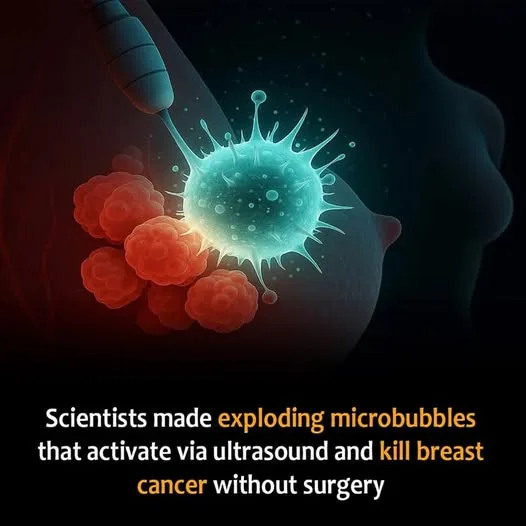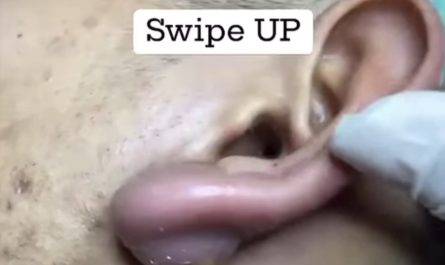Imagine a cancer treatment that acts like a fleet of microscopic smart bombs, targeting tumors with pinpoint accuracy and sparing healthy tissue. This isn’t science fiction—it’s the promise of a groundbreaking new therapy using ultrasound and gas-filled microbubbles. Developed by researchers, this innovative approach destroys cancer cells from the inside by leveraging explosive microbubbles and low-frequency ultrasound. With lab tests showing up to 80% of breast cancer cells eradicated in mice, this method could redefine cancer treatment, offering a noninvasive alternative to chemotherapy and radiation. In this blog post, we’ll explore how this technology works, its early successes, and its potential to transform oncology.

The Science Behind Microbubble Therapy
At the heart of this treatment are microbubbles—tiny, gas-filled spheres about one-tenth the diameter of a blood vessel (roughly 1–8 micrometers). These microbubbles are engineered to target tumors specifically, often by coating them with antibodies or molecules that bind to cancer cell markers. Once injected into the bloodstream, they circulate until they reach the tumor site.
The magic happens when low-frequency ultrasound (around 250 kHz) is applied. Unlike high-frequency ultrasound used in imaging, this lower frequency causes the microbubbles to oscillate violently. As they expand and contract, they eventually burst, delivering a two-pronged attack:
- Direct Damage: The explosion physically disrupts cancer cell membranes, tearing holes or causing outright destruction.
- Drug Delivery: The blast creates temporary pores in surviving cells (a process called sonoporation), allowing cancer-killing drugs or therapeutic genes to enter directly.
This dual mechanism—mechanical destruction and enhanced drug delivery—makes the approach uniquely powerful. The microbubbles act like precision-guided bombs, detonating only where ultrasound is focused, sparing healthy tissue.
Breakthrough Results in the Lab
In laboratory tests on mice with breast cancer, this ultrasound-microbubble therapy has shown remarkable promise. Researchers reported destroying up to 80% of cancer cells in targeted tumors, a level of efficacy that rivals or exceeds many traditional treatments. The method’s ability to weaken cancer cells while delivering drugs or genes directly into them amplifies its impact. For example, genes that trigger cell death (apoptosis) or drugs like doxorubicin can be introduced through the pores created by the microbubble explosions, attacking the tumor from within.
Importantly, the treatment avoids the systemic toxicity of chemotherapy and the tissue damage of radiation. By focusing ultrasound only on the tumor site, it minimizes harm to surrounding healthy cells, potentially reducing side effects like nausea, hair loss, or long-term organ damage.
How It Works: A Step-by-Step Look
Here’s a breakdown of the process:
- Microbubble Injection: Microbubbles, filled with inert gas (like perfluorocarbon) and coated with tumor-targeting agents, are injected into the bloodstream.
- Tumor Targeting: The microbubbles accumulate in the tumor due to their engineered coatings, which bind to specific cancer cell markers.
- Ultrasound Application: A low-frequency ultrasound beam (around 250 kHz) is directed at the tumor, causing the microbubbles to oscillate and burst.
- Cell Destruction and Delivery: The explosions rip holes in cancer cell membranes, killing some cells outright and creating pores in others. Drugs or genes, co-administered or carried by the microbubbles, enter these pores to attack the tumor further.
- Cleanup: The body naturally clears the microbubble remnants, which are biocompatible and nontoxic.
This noninvasive approach requires no surgery, and the ultrasound can be applied externally, making it a patient-friendly option.
Advantages Over Traditional Treatments
Current cancer treatments like chemotherapy and radiation, while effective, often come with severe side effects due to their impact on healthy cells. Microbubble-ultrasound therapy offers several advantages:
- Precision: Targets only the tumor, reducing collateral damage to healthy tissue.
- Noninvasive: No incisions or invasive procedures, unlike surgery or some targeted therapies.
- Versatility: Can deliver a range of therapeutics, from chemotherapy drugs to gene therapies, tailored to the cancer type.
- Reduced Side Effects: Early tests suggest minimal toxicity, as the treatment avoids systemic exposure.
The 80% cell destruction rate in mice is particularly encouraging, as it suggests the potential for significant tumor reduction without the grueling side effects patients often endure.
Challenges and the Road to Human Trials
While the results in mice are promising, translating this therapy to humans faces hurdles:
- Scalability: Human tumors are often larger and more complex than those in mice, requiring precise ultrasound calibration and higher microbubble doses.
- Targeting Accuracy: Ensuring microbubbles reach deep-seated or metastatic tumors without dispersing elsewhere is critical.
- Regulatory Approval: Human trials, which are likely years away, must confirm safety and efficacy across diverse cancer types.
- Cost and Accessibility: Developing and scaling the technology, including specialized ultrasound equipment, could be expensive.
Despite these challenges, the therapy’s potential is immense. Researchers are already exploring its use for cancers beyond breast cancer, such as pancreatic or brain tumors, where precise drug delivery is critical. The ability to combine microbubbles with immunotherapy or gene-editing tools like CRISPR could further expand its applications.
The Future of Cancer Treatment
If human trials succeed, microbubble-ultrasound therapy could revolutionize oncology. Its noninvasive nature and high precision make it a candidate for treating inoperable tumors or cancers resistant to traditional therapies. Beyond cancer, the technology could be adapted for other diseases, such as delivering drugs across the blood-brain barrier for neurological conditions like Alzheimer’s or Parkinson’s.
The therapy also aligns with the broader trend toward personalized medicine. By tailoring microbubbles to specific cancer markers and pairing them with customized drugs or genes, doctors could create highly individualized treatment plans. This could improve outcomes while minimizing the physical and emotional toll of cancer treatment.
Conclusion
The development of ultrasound and microbubble therapy marks a thrilling frontier in the fight against cancer. By harnessing the power of exploding microbubbles, researchers have created a method that destroys tumors with surgical precision while opening doors for targeted drug and gene delivery. The 80% destruction rate in mouse models is a beacon of hope, pointing to a future where cancer treatment is not only effective but also kinder to patients. As this technology moves toward human trials, it carries the promise of transforming oncology, offering a smarter, safer way to battle one of humanity’s greatest challenges.
If you’re curious about the latest updates on this research, specific cancer types it could target, or discussions about it on platforms like X, let me know, and I’ll dive deeper!





